Dutch photographer, Marsel van Oosten, has won the 54th Natural History Museum 2018 Wildlife Photographer of the Year contest for his picture, The Golden Couple. Australian photographer, Georgina Steytler, came first in the Behaviour: Invertebrates category for her photo, Mud-Rolling Mud-Dauber.
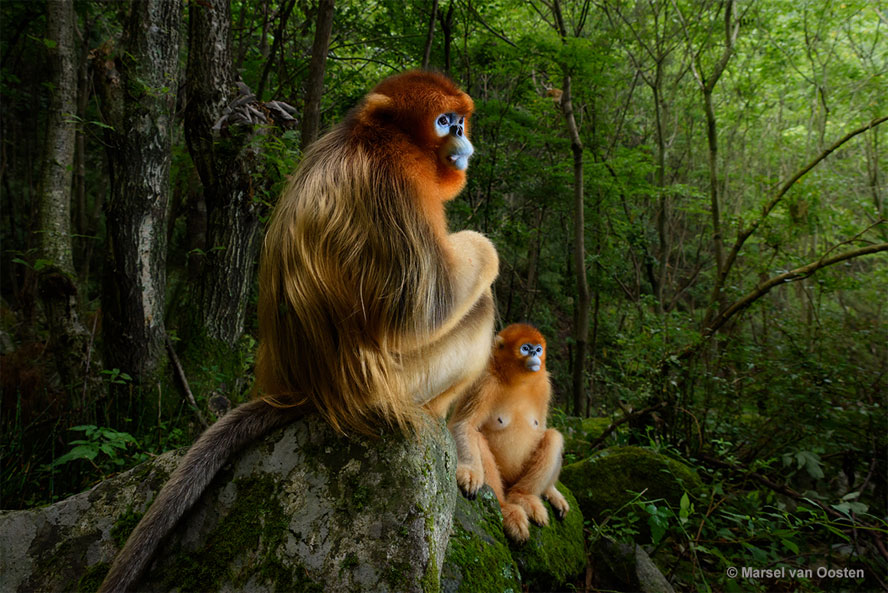
Marsel’s striking winning image is of two endangered golden snub-nosed monkeys, seemingly posing on a rock in their forest home in the Qinling Mountains of Central China.
‘This image is in one sense traditional – a portrait,’ said experienced wildlife magazine editor and contest jury char, Roz Kidman Cox. ‘But what a striking one, and what magical animals. It is a symbolic reminder of the beauty of nature and how impoverished we are becoming as nature is diminished. It is an artwork worthy of hanging in any gallery in the world.’
Marsel said he was lucky the monkeys behaved while drenched in perfect light. They’re normally screaming up in the tree tops, but in this instance they were staying still, while looking in the direction of other monkeys.
There’s an estimated 22,000 golden snub-nosed monkeys surviving in fragmented populations across the Chinese central mountains. The destruction of forests by humans is the major factor contributing to the falling numbers of monkeys.
Georgina Steytler wins Behaviour: Invertebrates category
Georgina, a West Australian bird photographer and conservationist, captured the curious mud wasp behaviour at a Wheatbelt waterhole.
While surveying the surrounding bushland for mulga parrots, after some time she drew her attention to the waterhole and noticed the wasps.
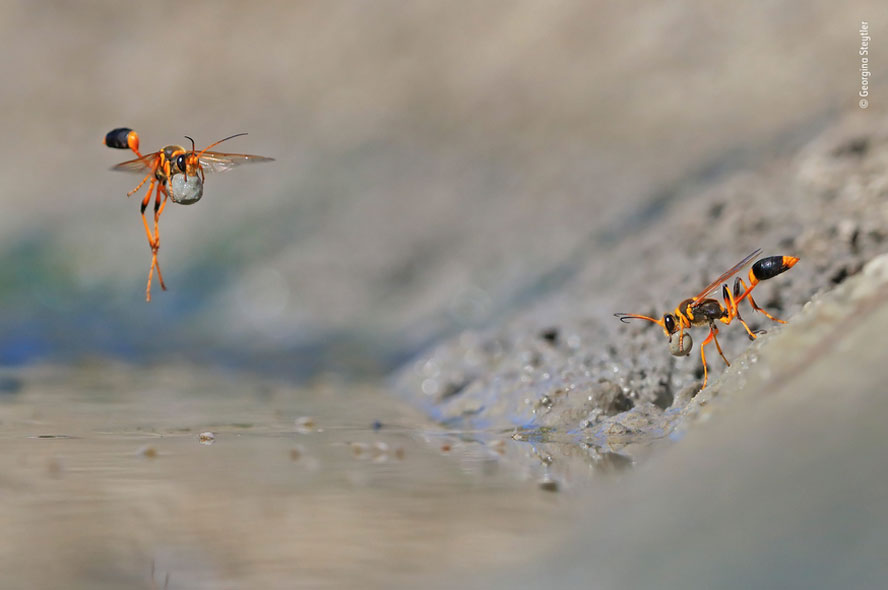
The industrious wasps dig for the best mud, and roll it into soft balls to create nests. After building a chamber inside the mud to lay her eggs, the female leaves the body of a paralysed spider for the larvae to feed once hatched.
‘I’m instinctively drawn to the challenge of trying to capture anything that flies, and when you find an animal that has a distinct flight path it is a golden opportunity,’ Georgina told Inside Imaging. ‘What makes this image a bit different to a traditional insect shot is I took it with my Canon 600mm F4 prime lens with a 1.4x teleconverter attached. Tracking such a small insect with such a big lens at relatively close range – just over four meters – was extremely difficult. I soon gave that up. Rather, I realised that my best hope was to pre-focus (manual) on an area and try to capture the flying insect coming into the frame.’
The picture was shot with a Canon 1Dx, an aperture of f8, 1/4000 sec shutter speed, and ISO 1000. Georgina utilised the ‘spray and pray’ method – hitting the shutter whenever the insect flew close. She filled her card with around 5000 RAW images quickly.
Georgina was in a fairly uncomfortable position, lying down on a steep sloped bank covered in mud. But the challenge of capturing the wasps was exhilarating, and far outweighed the discomfort she experienced.
The West Australian prefers to document animals in the best light, location, or exhibiting interesting behaviour, rather than pursuing an exotic or rare in stock standard conditions.
‘ So in this case, although I wanted to photograph a mulga parrot, once I saw the wasps behaviour I knew this would be a more interesting shot and the mulgas could wait until another day. A beautiful or interesting photo of a common bird or animal is much better than an average or boring photo of a rare one.’
Check out more of Georgina’s photography here.
Other award winners
Another Australian photographer, David Gallan, was highly commended in the Animals In Their Environment category for his photo, Home of the Quoll.
David’s spotted-tailed quoll photo was captured in Monga National Park in NSW, using a camera trap, a scent bait to pause a passing Quoll, Nikon D700, 10-24mm lens, 1/100 at f4.5 and ISO 3200.
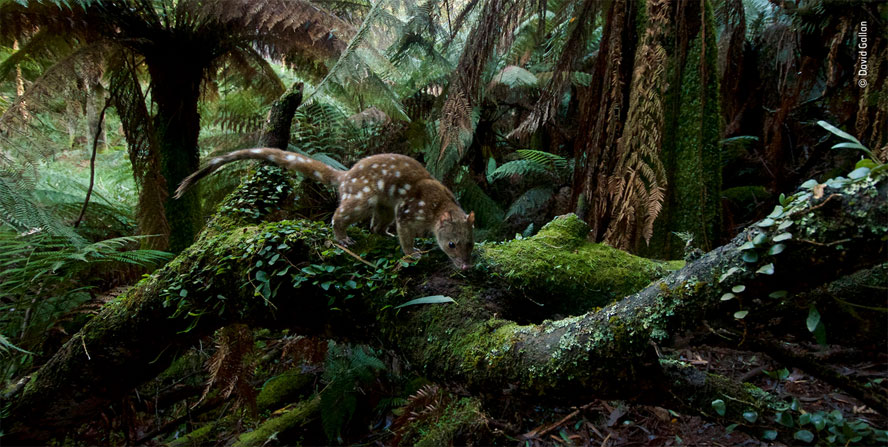


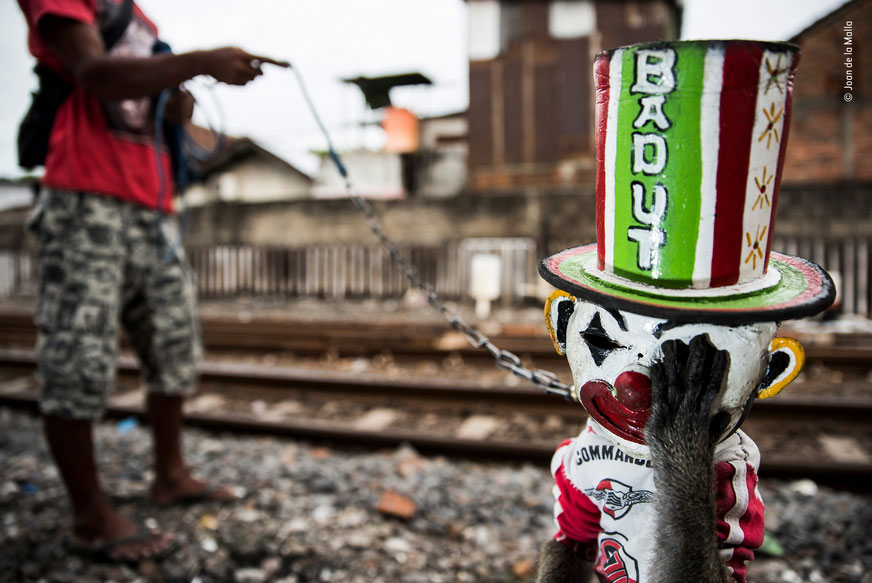
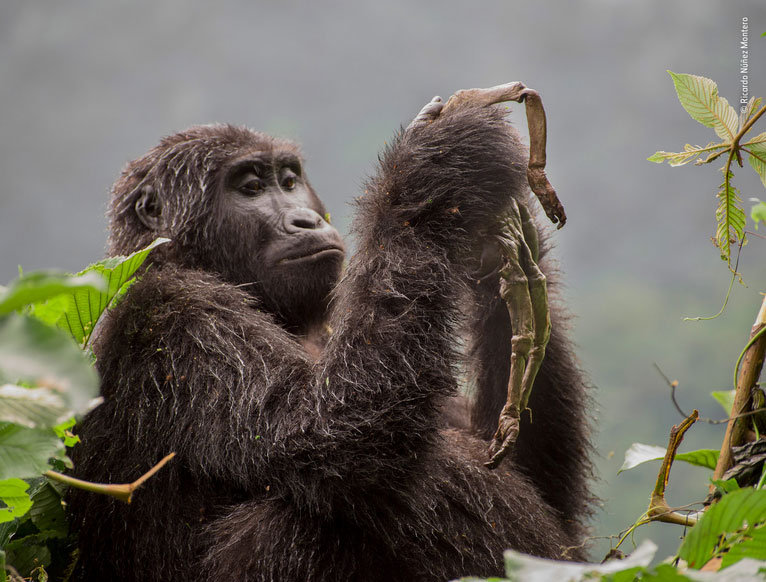





Be First to Comment